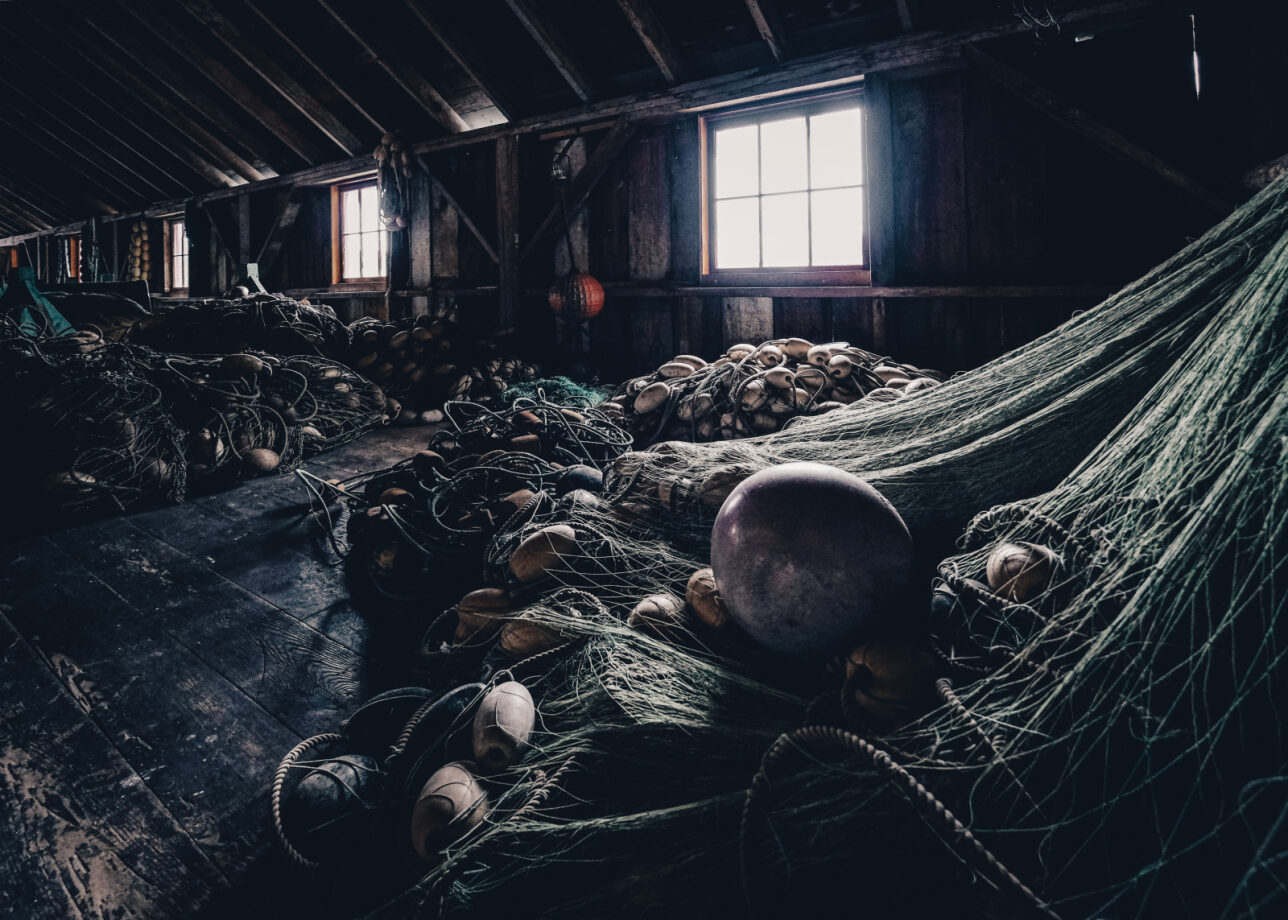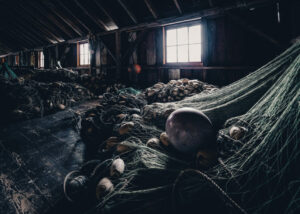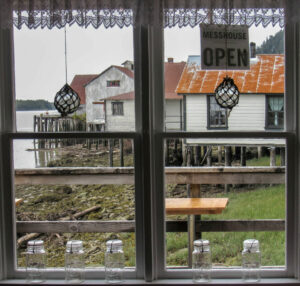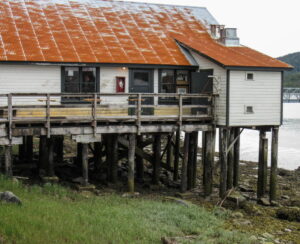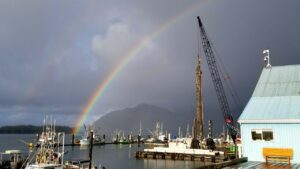Entering the North Pacific Cannery National Historic Site—a collection of wooden, tin-roofed buildings spread along the tidal bank of the Skeena River and connected by a series of boardwalks—is like stepping into a time machine. Although salmon canning at this site, just south of the village of Port Edward and about 16 miles south of Prince Rupert, ended years ago, history lives on.
The cannery is one of the oldest in the province and was a key part of the early development of Prince Rupert, today the third largest port in Canada and bustling with boats. Salmon are a vital resource in British Columbia and continue to be of great importance to Indigenous peoples.
Our guide, Lola, explained how in 1888, the North Pacific Cannery Company was formed, and in 1889 a salmon-processing plant was built on 183 acres of land, purchased for $32. The cannery occupied a strategic spot in the Skeena River estuary along what became known as Cannery Row, sheltered from the open ocean but with easy access to the rich fishing grounds of BC’s North Coast.
In 1892, the Anglo-British Columbia Packing Company (ABC Company) purchased the North Pacific Cannery (NPC). By the mid 1890s, the company was the foremost packer of sockeye salmon in the world. At one time, about 200 canneries existed along Canada’s West Coast with more than 50 in the Prince Rupert area.
Primarily because of physical isolation, northern canneries had to be self-sufficient communities that included housing for employees, who would live on site through the season. Canneries also had to be built near the fishing grounds so the catch could be processed quickly to prevent spoilage in the days before refrigeration.
As we strolled along the boardwalk, I noticed that almost all the buildings stood on stilts. Lola explained this was because the tide waters could rise as high as 26 feet twice a day. Workers stayed in clapboard bunkhouses and triplexes, while officials had their own cabins. Some First Nations workers brought their whole families. There was a mess house and restaurant, a wash house and a store that also doubled as the community centre.
In 1892, when ABC Company took over the plant, it was a one-line cannery with two rooms for mild cured fish. A cold storage plant was added in 1910 but it closed in 1920 and was dismantled in 1954. A can-making factory was built at the site in 1918, and until 1936 it made and supplied cans for other canneries in the area. By 1923 the cannery had expanded to a 26,000-square-foot, two-line operation, with cold storage and a blacksmith shop.
The size of the workforce varied, with about 600 workers at the beginning and nearly 1,000 at its peak in the early 1950s. Although only 29 buildings remain today, at one time the cannery consisted of more than 130 buildings.
Chinese, First Nations and Japanese workers were often segregated at the cannery and in their bunkhouses. Japanese did the fishing and net mending, First Nations fished and worked on the cannery line, while Chinese did the cooking, and in the early days butchered the fish and made the cans by hand. Europeans managed the company and also fished. Women performed less-skilled tasks including fish cleaning and washing, at a lower wage. First Nations women were net-women and butchers, and later worked with the mechanical fish-processing machinery.
Lola explained the process started by catching salmon using boats and seine nets. Next was the unloading of the fish, followed by sorting and weighing. The canning line was dependent on when the boats would arrive and workers often had to wake up in the middle of the night and work random hours allowing for best preservation of the salmon.
Then the fish were killed and washed. The heads along with the fins and tails were removed. The workers on this line were known as the “singing knives” because they were so efficient (one fish in 10 to 15 seconds).
In the early days, all the labour was done by hand. In the early 1900s, mechanical advancements came to the canning industry. A gang-knife machine, an “iron butcher” and can soldering machines were installed. The iron butchering machine, patented in 1905, could cut and clean a salmon in about one second. Previously an experienced butcher could cut the head off, open up the belly and take off the fins at four to five fish a minute. Lola explained, “Technology improved efficiency but at a human price.” Each “iron butcher,” for example, eliminated about 27 jobs out of of a 30 member team.
The Grand Trunk Pacific Railway (later the Canadian National Railway) was completed in 1914 passing through the NPC property. Linking to transcontinental service, the railway improved the plant’s ability to ship canned salmon to international markets and gave the NPC an advantage over other canneries.
Later, automatic filling machines filled cans with fish at more than 100 cans per minute. Whole cleaned salmon could be directly fed into the machines and rotating gang knives would cut the salmon into the correct lengths to fit the various sized cans. The sanitary can machine was another major innovation because it sealed cans of fish without solder. Other machines invented included filling, salting, weighing and sealing machines. These machines greatly increased the efficiency of production and profitability but reduced the amount of labour required, resulting in the loss of many jobs.
The workers at NPC faced tough conditions with cold being a major issue. The fish were kept in ice-cold water-holding tanks into which the workers had to reach in up to their elbows. Also, the buildings were built over the water, allowing cool air to seep through the large slits in the floor. The slits allowed fish guts to be easily washed from the floor into the ocean. Furthermore, toilets were built over the water. “I can’t imagine what the stench was like,” grimaced Lola.
Leading us along the cutting and packing line, Lola described the hard-working conditions including long hours, child labour and poor safety. A scream of pain often resounded, she said, as a finger was chopped by a sharp knife or machine, followed by frantic searching for the lost digit before it got canned.
Once filled, the cans were wheeled into large steam ovens to cook for about 90 minutes. The cannery produced tins of pink, keta or chum, sockeye and coho salmon for Clover Leaf, Red Rose and Queen Charlotte brands. A maximum of one million cans was produced in the early 1900s.
The cannery was also a happy place. Standing on the steps of the Railman’s House, Lola explained how her grandmother, Arlene, arrived at age three and lived in this house for 10 years. Her father, a Norwegian, was a boat builder and fisherman. Arlene visited recently and remarked how when she lived here she wasn’t allow outside during high tide because there were few railings and she couldn’t swim. She is still friends with some of the Japanese she met then and continues to make rice the way they taught her.
ABC owned and operated North Pacific Cannery until 1968, the last full season of salmon canning, when the company was folded and its assets sold off. NPC’s history is unique because of its almost continuous ownership by a single firm for more than 76 years. North Pacific Cannery was purchased by Canadian Fishing Co. in 1968 and re-opened for a partial season in 1972. The site continued to operate as a maintenance and reduction facility for the fishing fleet in Prince Rupert until 1981, when it closed permanently.
The cannery was established at a time when salmon were considered inexhaustible, a limitless source of economic growth and wealth. Enormous optimism reigned and frenetic efforts were made to grow the cannery. But mechanization killed jobs, and then the numbers of salmon started to decrease. After many decades, Lola explained, the NPC finally closed. And soon after, the last cannery in Prince Rupert closed.
In 1985, the Port Edward Historical Society, an organization of local historians, saved the site, paving the way for today’s museum, a rustic and evocative place whose historic buildings are filled with artifacts from a time gone by. In 1985, it was granted a National Historic Site designation. Today, it offers a glorious window into the past and is one of the major tourism attractions on BC’s North Coast.
When You Go
The closest marina is Port Edward Harbour Authority’s Porpoise Harbour Marina Complex, located in Porpoise Harbour. The marina is well protected though you may be sharing space with the commercial and recreational fishing fleets. There is space for about 250 boats here up to 60 metres long and the docks are supplied with power and water. At the head of the ramp you’ll find vessel repair facilities as well as washrooms, shower facilities and a “coin operated” laundry facility. It’s seven kilometres from Port Edward to the cannery site. Contact the cannery to arrange shuttle transportation to and from the museum site. For more information on marinas in the area go to peharbourauthority.com.
The cannery, open from May to October, has a gift shop, a model train set and the historic Mess House offers home-made salmon chowder. Find out more about the cannery at northpacificcannery.ca.
While at the NPC you can view bald eagles, seals, and blue herons, while enjoying local marine activity including crabbing boats, gillnetters, barges, yachts and the occasional behemoth cruise ship. For information about tourism check out visitprincerupert.com
